Several years ago, my colleagues and I at the PA SHPO compiled a history of preservation achievements in Pennsylvania. This interesting trek through the preservation timeline was published in the Winter 2016 issue of Pennsylvania Heritage magazine and was added as a chapter in the current statewide historic preservation plan, #PreservationHappensHere. This week in honor of Women’s History Month, I’m taking a deeper dive into the role of women in Pennsylvania’s preservation accomplishments.
I’ll say right off the bat that I have by no means captured all the accomplishments by all the women in Pennsylvania. These are just a few that my colleagues and I are aware of – and a couple hours online has proved to me that this is a subject that is worthy of much more attention and is undoubtedly a gold mine of past preservation successes that we don’t know about yet.
My goal with today’s post is to spark your interest and hopefully shake loose some of your own local history knowledge about how women shaped preservation in your neck of the woods. I’ve picked three to highlight, each representing different facets of historic preservation: community revitalization, historic homes, and archaeology.
Hollidaysburg Area Women’s Club and the “Heritage of Hollidaysburg” Project
By the early 1980s, Hollidaysburg, according to the local papers and residents, was down and out. Editorials in The Blair Press pointed out community apathy along its main streets; an article “Town’s Growth Stalls, Tax-Free Property Mounts” cites that “High taxes, lack of commercial development and the growth of malls… are stunting the growth of the borough.” The same article also notes that some residents saw the opportunities presented by the borough’s collection of historic buildings – that they “are an asset to the community” and shouldn’t suffer the same fate as those in nearby Altoona. There was also the recognition that in order to succeed in making a change in Hollidaysburg, the community would need to come together.
Enter the Hollidaysburg Area Women’s Club (HAWC), which had been started in 1936 as a women’s non-profit volunteer organization and part of the General Federation of Women’s Clubs (GFWC) serving the Hollidaysburg community. Like all members of GFWC, HAWC regularly planned and implemented community service programs as part of their mission. They saw a lack of community pride and interest in local history as part of the borough’s problem and designed a community improvement program to address the challenge: the Heritage of Hollidaysburg project. At its core, their Heritage project, started in June 1980, was a preservation effort focusing on education and action. Their objective was specific and tangible: educate the community in its rich past to increase community pride which would in turn lead to the restoration and revitalization of the borough.
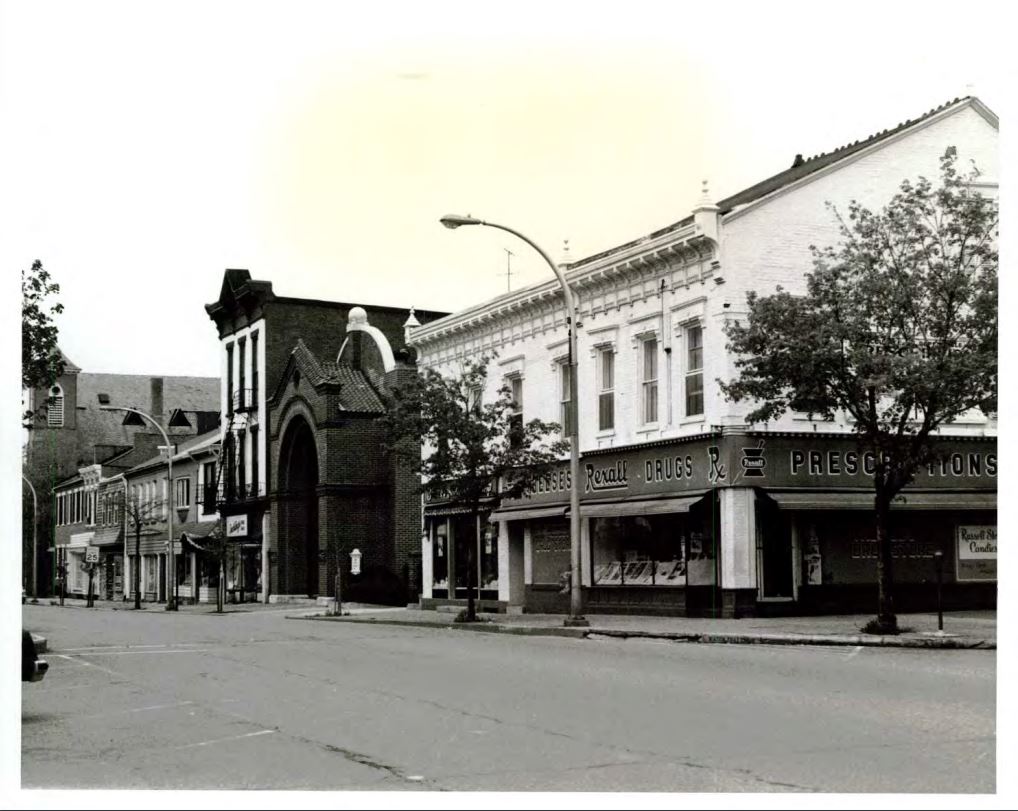
Allegheny Street in Hollidaysburg in 1984. Source: Hollidaysburg Historic District National Register nomination (1984RE02662).
HAWC designed a two-part, two-year plan of attack. Part 1 was a series of educational materials to instill local history wherever they could from a slide show for grade schools to placemats in local restaurants to a history book and house tour. The most lasting result of the project, however, was Part 2: the establishment of the non-profit Blair Foundation for Historic Hollidaysburg in 1981, the forerunner of today’s Historic Hollidaysburg, Inc.
In it’s first year, the Foundation was supported by five committees, including a Historic Preservation Committee that outlined six goals to identify, document, and preserve the borough’s historic places. The Foundation’s work focused on identifying potential National Register listings, educating business owners about the federal historic preservation tax credit program, and borough beautification efforts. The Hollidaysburg Historic District was listed in the National Register in 1985, thanks in large part to their work.
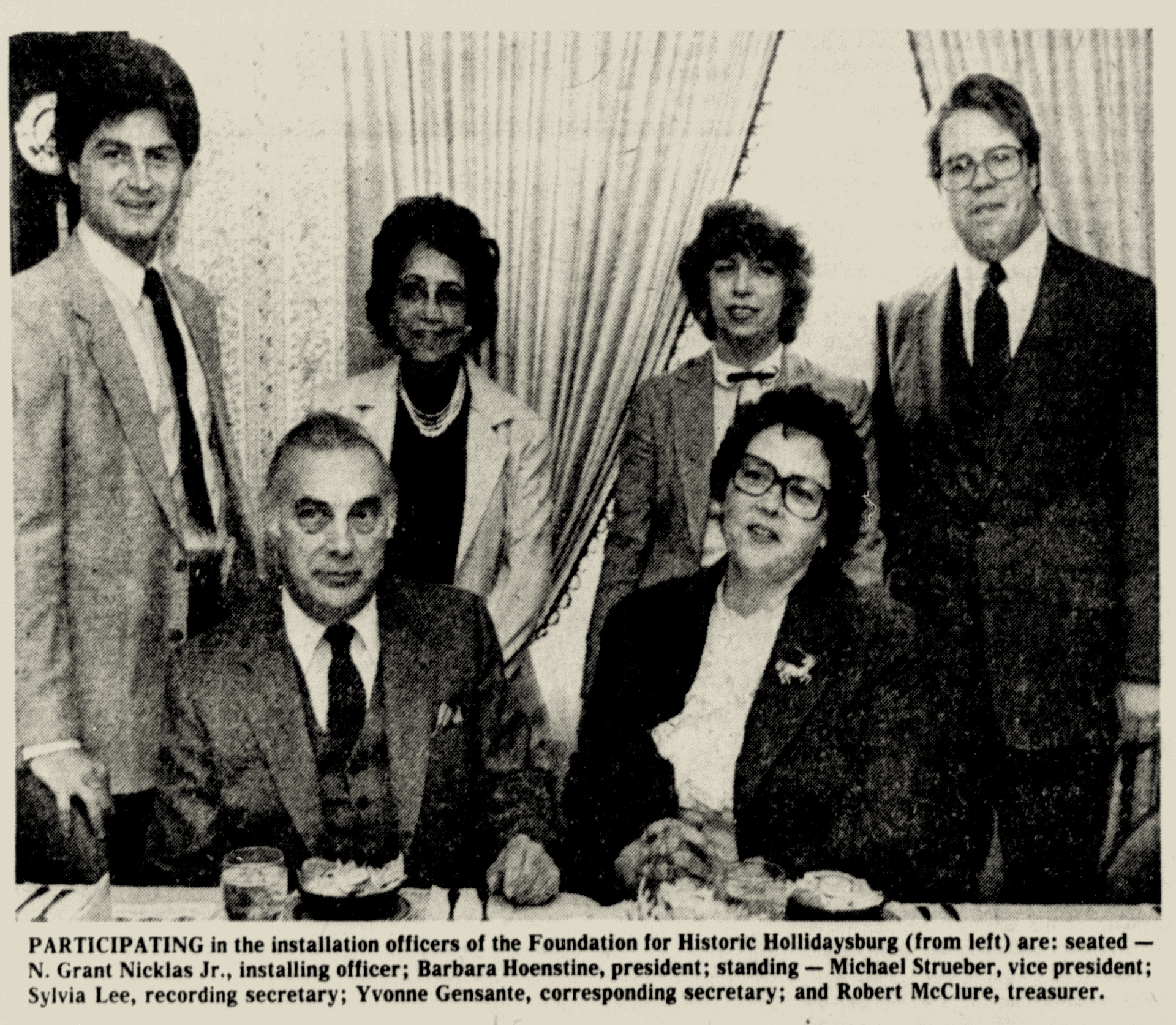
1982 newspaper article from the Altoona Mirror covering the installation of officers for the Foundation for Historic Hollidaysburg.
[Editor’s note: This history is taken from a 1980s report titled “Hollidaysburg Area Women’s Club Community Improvement Program” in PA-SHARE. If you’d like to learn a lot more about HAWC and this project, go to PA-SHARE, sign in as a Basic user, click on Search to open the search screen, and paste 2024RP00100 into the Report Number field.]
The Junior League of Lancaster and the Preservation of Wheatland and Rock Ford
The Junior League was founded in New York City in 1901 by socialite Mary Harriman to address the living conditions of immigrants in the city’s Lower East Side. This non-profit volunteer organization specifically for young women – hence the “Junior” – soon spread and a branch was founded in the city of Lancaster in November 1923. Since their founding a century ago, the Junior League of Lancaster (JLL) has embarked on a number of different community impact projects that support families, children, and local history. Two of their early projects were preservation: the restorations of Wheatland and Rock Ford.
Wheatland, a National Historic Landmark, is the early 19th century home of the only U.S. President from Pennsylvania, James Buchanan. After Buchanan’s death in 1868, Wheatland passed through a series of owners to Mary Wilson Rettew. When she died in 1934, her executors put the estate up for sale and in stepped the JLL. In 1935, the group founded the “James Buchanan Foundation for the Preservation of Wheatland” to raise money to purchase the property. They were successful and took ownership in February 1936, opening it to the public a few months later in 1935. Today, Wheatland is preserved and interpreted by LancasterHistory, the county’s historical society.
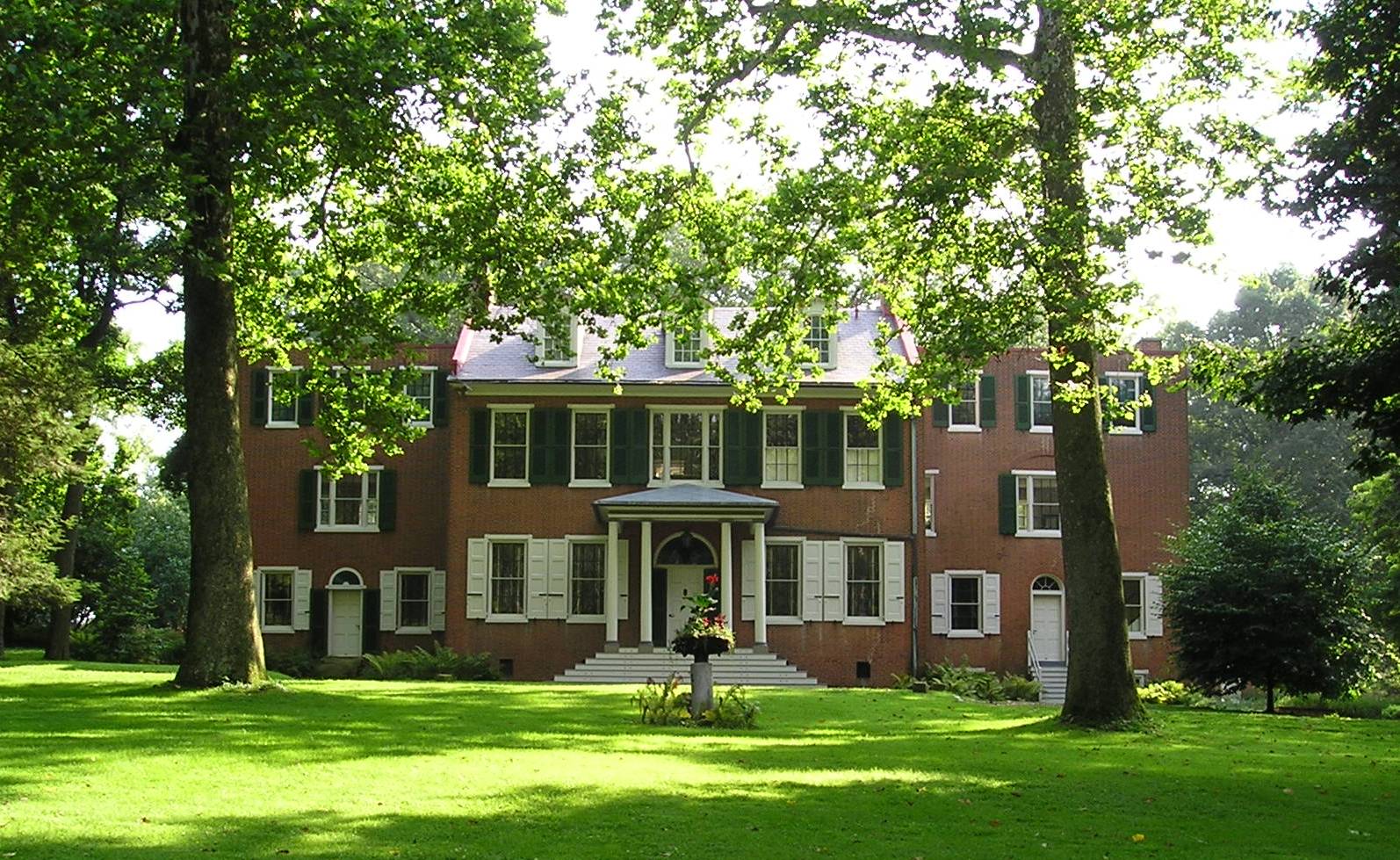
Wheatland, home of James Buchanan, the 15th President of the United States. (1961RE00031)
A few decades later, the JLL was instrumental in saving the Rock Ford estate. Rock Ford was built in 1794 by Edward Hand, a doctor, adjutant general to George Washington in the Revolutionary War, and politician who served in local, state, and federal government. The estate was sold after the death of Katherine Hand in 1805 and was occupied as a tenant farm until the mid-20th century. Miraculously, the house changed very little in the 150+ years since Hand built his Georgian-style mansion. By the 1950s, the Lancaster Area Refuse Authority had purchased Rock Ford with the intention to demolish the farmstead for an incineration plant and landfill. The JLL purchased the property in 1957 to stave off demolition and in 1958 established the Rock Ford Foundation to restore and operate the property.
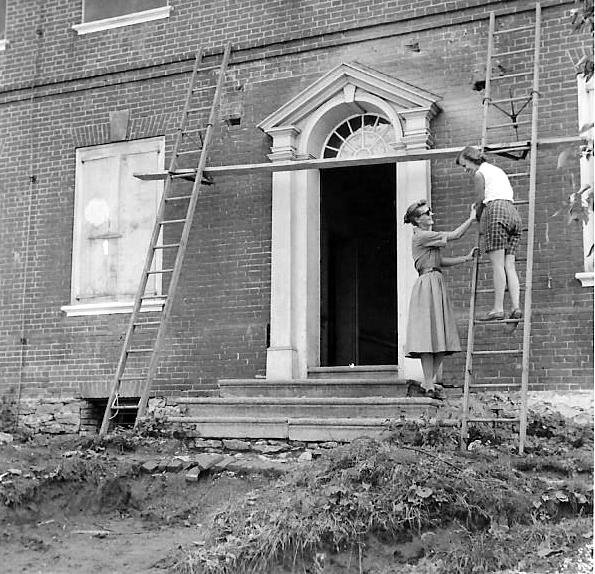
Members of the Junior League of Lancaster work on Rock Ford in the 1950s. Source: https://www.historicrockford.org/the-junior-league-of-lancaster.
Today, Historic Rock Ford interprets the property to tell the “diverse and complex life of 18th century Lancaster,” learning not only about the Hand family but also the “tenants, servants, and laborers enslaved, indentured and free who lived and labored at Rock Ford.”
Frances Dorrance and the Society for Pennsylvania Archaeology
Frances Dorrance (1877-1973) is credited with the founding of the Society for Pennsylvania Archaeology (SPA) and the start of the Pennsylvania Archaeological Site Survey (PASS). Born in Wilkes-Barre, Luzerne County, Dorrance held various positions in her career included translating horticultural studies into English, serving on the board of the Pennsylvania Historical Commission (predecessor of PHMC), head of the library circulation department of Wilkes College (now Wilkes University), and director of the Pennsylvania Folklore Society. But it was her work as the director of the Wyoming Historical and Geological Society of Wilkes Barre (now the Luzerne County Historical Society) in the 1920s that earns her a spot in the history of preservation in the commonwealth.
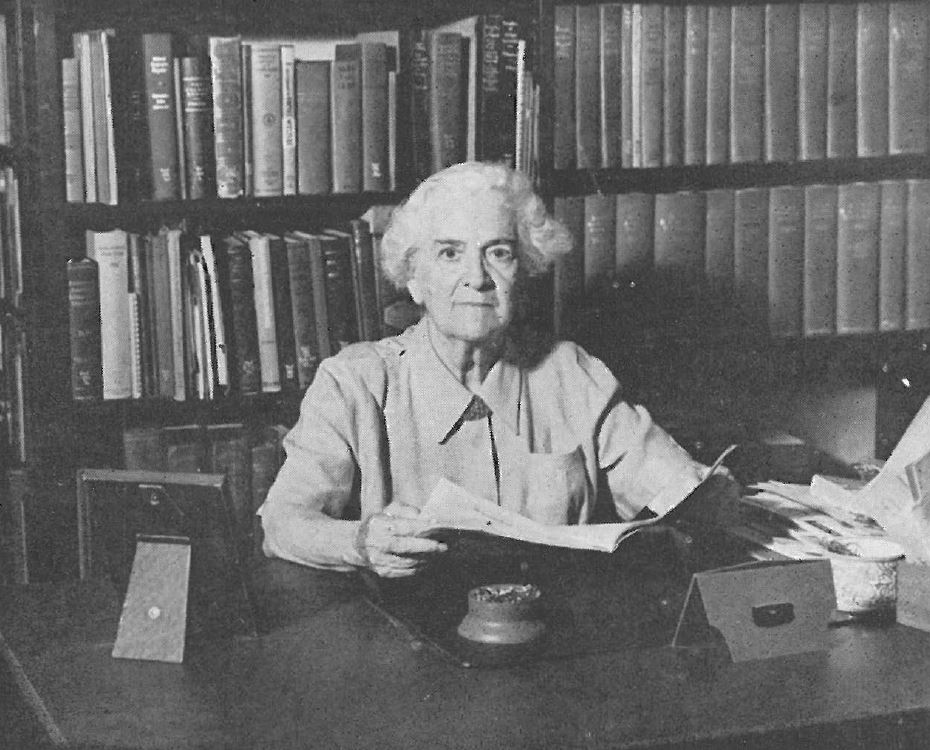
Frances Dorrance at her desk in Hoyt Library in Kingston, PA.
Image courtesy of the Pennsylvania Archaeologist 1955 Vol 25. No. 1.
Dorrance was aware of archaeology work exploring Native American sites in neighboring states and felt that such study in Pennsylvania was lacking. She also knew the development pressures would lead to the loss of important archaeological sites. To address the problem, she developed a plan – survey Pennsylvanians about what they know, identify known sites, and organize people to study the sites with scientific integrity.
In 1924, she mailed a questionnaire to “postmasters, foresters, grange and society officers, leaders of groups of people, Boy and Girl Scout leaders, individual collectors and known experts in the region” in 40+ counties in the eastern half of the commonwealth. She received almost 2,000 responses ranging from offers of assistance to knowledge of local indigenous sites (1,900 sites!) and information about artifact collections (1,200 collections!). In 1927, the Pennsylvania Historical Commission assumed responsibility of Dorrance’s Indian Sites Survey and expanded it to include all 67 counties. This was the start of the PASS program, which PHMC still operates today.
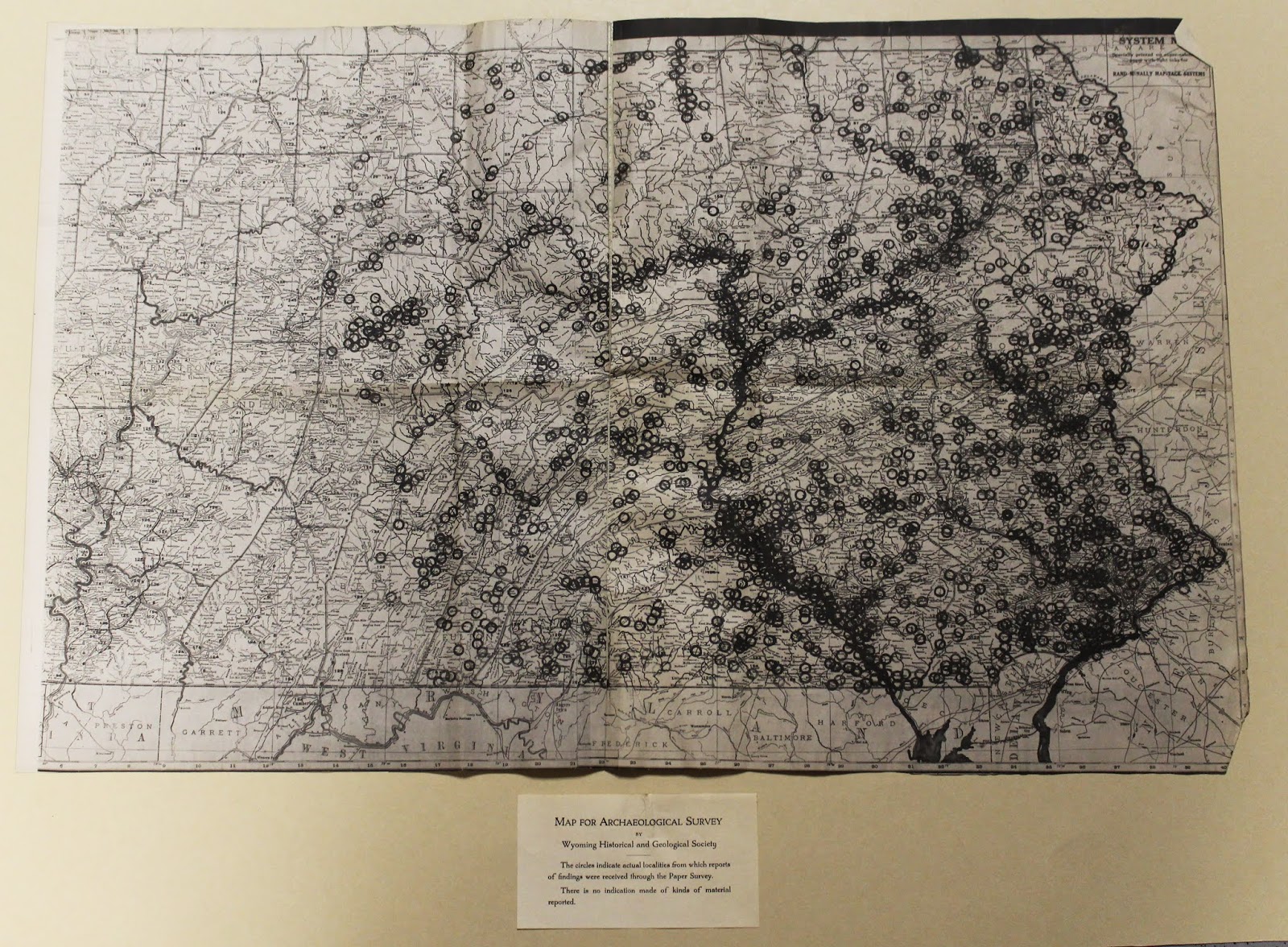
Map of the Indian Sites Survey, created by the Wyoming Historical and Geological Survey. Source: https://twipa.blogspot.com/2019/06/notable-women-of-archaeology.html.
In March 1929, Dorrance contacted approximately 200 people from across the state to gauge their interest in forming a statewide archaeology organization. The first meeting of what would be called the Society for Pennsylvania Archaeology was held in the state library in Harrisburg in May 1929. Dr. J. Alden Mason from the Penn Museum was elected as the first president and Dorrance served as the secretary. She held that position until 1934, when she was elected president of the society.
Since its founding, SPA has held an important role in the field of archaeology in Pennsylvania. Their publication, Pennsylvania Archaeologist, was started in 1930 and continues as a place to document the work of Pennsylvania’s professional and avocational archaeologists studying the commonwealth’s prehistoric and historic sites. Today, there are thirteen active chapters that continue the work Dorrance started in the 1920s.
To be continued…
We owe much to the power of women in shaping the historic preservation movement in Pennsylvania and the United States. If I had the space and time, I’d keep going with this post to highlight the great work of more great women in preserving the great places that tell our local, state, and national stories. All share a commitment to hard work, dedication, resources, and old-fashioned gumption that laid the ground work for historic preservation today.
As I mentioned at the start, this is a rich and worthwhile topic with so many avenues (or rabbit holes, if you’re like me when I’m researching an interesting topic) to explore. A discussion about the role of women in Philadelphia’s local preservation history, particularly the work of Frances Anne Wister, The Philadelphia Society for the Preservation of Landmarks, and the Women’s Committee of 1926, deserves at least one post of its own.
I also haven’t touched on the work of other national women’s groups whose mission includes history and historic preservation. Easton’s Daughters of the American Revolution, for example, were instrumental in preserving one of that city’s important Colonial-era buildings, the Parsons-Taylor House. In Philadelphia, Pennsylvania’s Colonial Dames chapter stepped in to save Stenton, the home of influential Colonial-era politician James Logan, in 1899. Even with their complex history on social issues like race and class, these organizations recognized early preservation successes that saved iconic places.
I’m saving some of the other Keystone State champions for another post for another day. What can you tell me about how women shaped preservation and the appreciation of historic places in your community?
I’ll give you another call to action, too: Who are the women making a difference in preservation today that someone else will be writing about in the decades to come?
Comment Policy
PHMC welcomes and encourages topic-related comments on this blog. PHMC reserves the right to remove comments that in PHMC’s discretion do not follow participation guidelines.
Commenters and Comments shall be related to the blog post topic and respectful of others who use this site.
Commenters and Comments shall not: use language that is offensive, inflammatory or provocative (this includes, but is not limited to, using profanity, obscene, or vulgar comments); disparage other commenters or people; condone illegal activity; identify the location of known or suspected archeological sites; post personal information in comments such as addresses, phone numbers, e-mail addresses or other contact details, which may relate to you or other individuals; impersonate or falsely claim to represent a person or an organization; make any commercial endorsement or promotion of any product, service or publication.
If you would like to comment on other topics not related to this blog post but related to PHMC, please fill out the PHMC Contact Us Form.
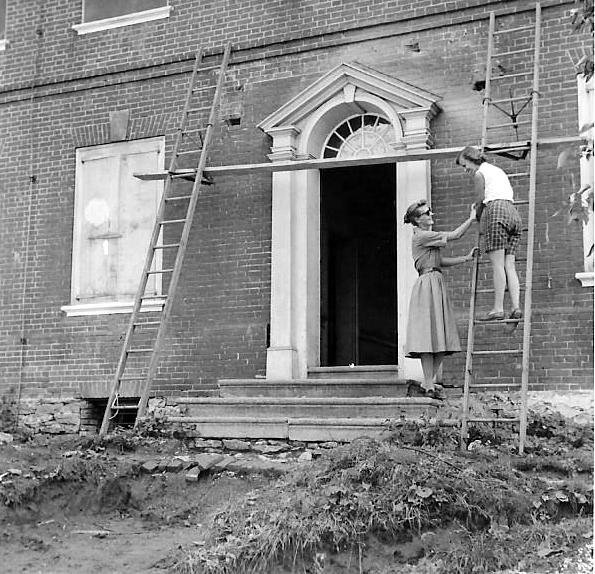
There is no doubt that women have led and contributed greatly to the preservation movement in Pennsylvania. Thank you, all!
Don’t forget Theresa Beard, founding member, with Raymond Elliott and Dr. Arthur Graeff, of the Historic Preservation Trust of Berks County. She was a driving force in the restoration of the Mouns Jones House in Morlatton Village (now Douglasville.)
Unfortunately, the Trust’s website seems to have been hacked by a commercial restoration company.
Don’t forget Jane L. S. Davidson, the first professional preservationist in Chester County and founding Historic Preservation Officer for Chester County, and Alice Kent Schooler, an architectural historian, possibly the first in Chester County, who played an instrumental role in the preservation of West Chester’s historic fabric to the point that she was the (posthumous) third recipient of the West Chester Downtown Foundation’s Preservation Legacy Award.